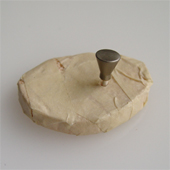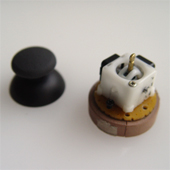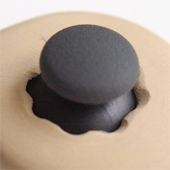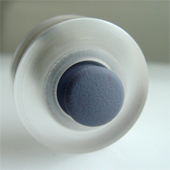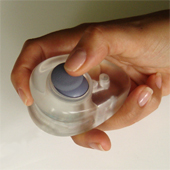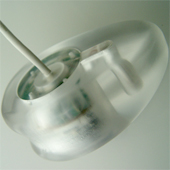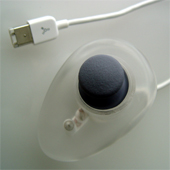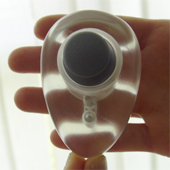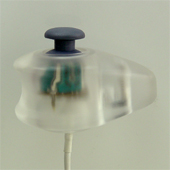The goal in designing the input device was to create a one-handed controller to
support the writing gestures. Since this complex
product-design challenge was not the main focus of SonicTexting the design was kept as basic as possible in both material and form.
Below is a series of images from different stages of this design process. |
| In making the Keybong we searched for the simplest form that would enable performing the writing gestures comfortably with either hand. It contains a joystick that is also a push-button. The first Keybong versions were round; then the shape was modified to ensure that it does not rotate in the hand. A version in which physical grooves helped in finding the eight perimeter locations was tested; it was decided not to use it so that the navigations would be performed solely by sound. |
|
| |
| The final Keybong version can be used comfortably with both hands by people with different hand sizes. The Keybong also contains a small eccentric motor that provides vibro-tactile feedback in the writing process. This tactile layer accompanies and augments the sound layer. The Keybong shape has been further tuned and a groove in the upper part supports the forefinger. An alternative form version (on the right) with a larger size and rounded bottom was made for larger hands. |
|
|
| Thanks to Edoardo Brambilla and Jan-Christoph Zoels for their help during this process. |
